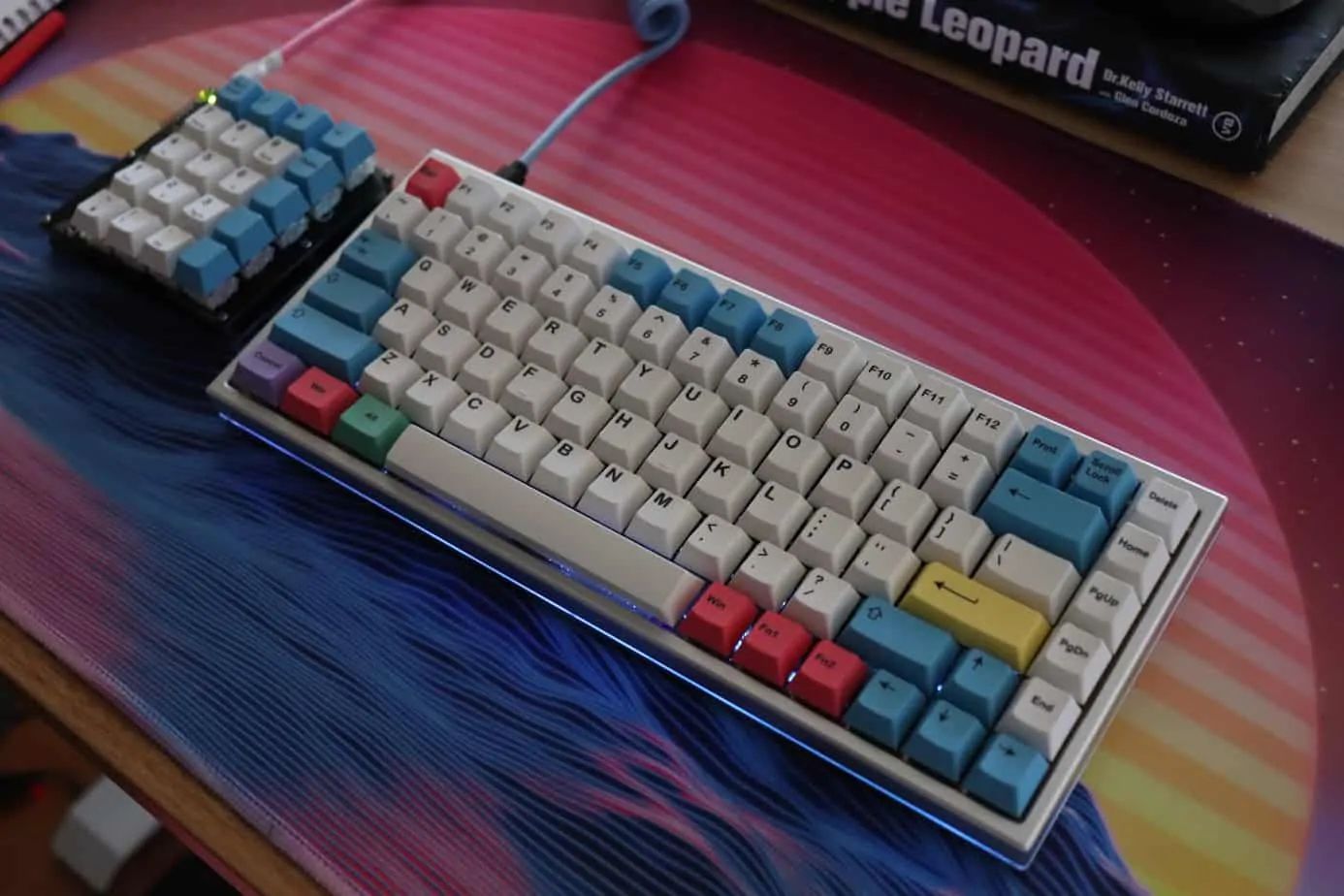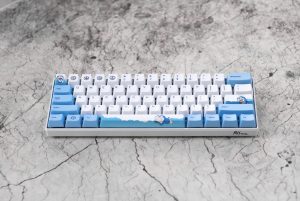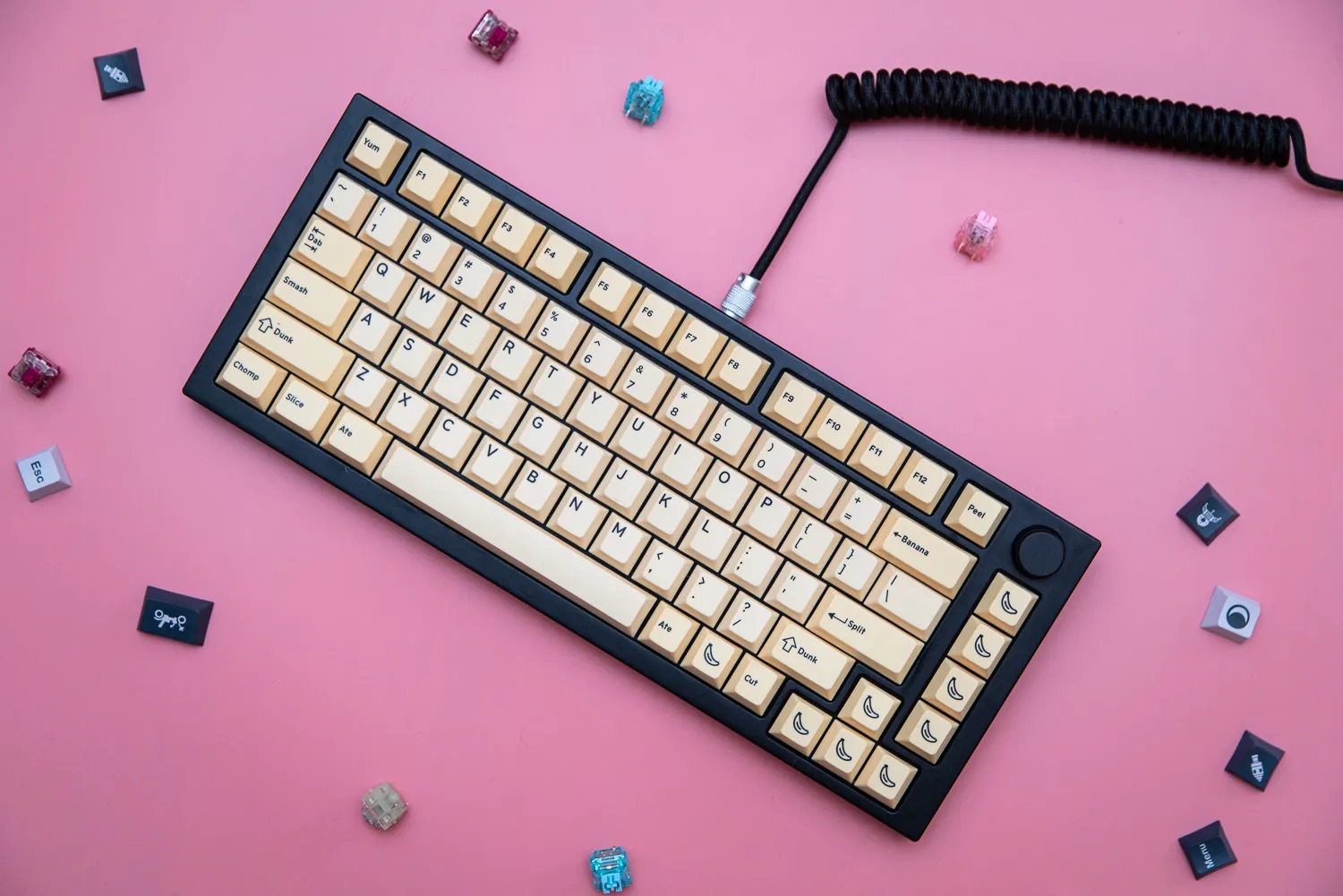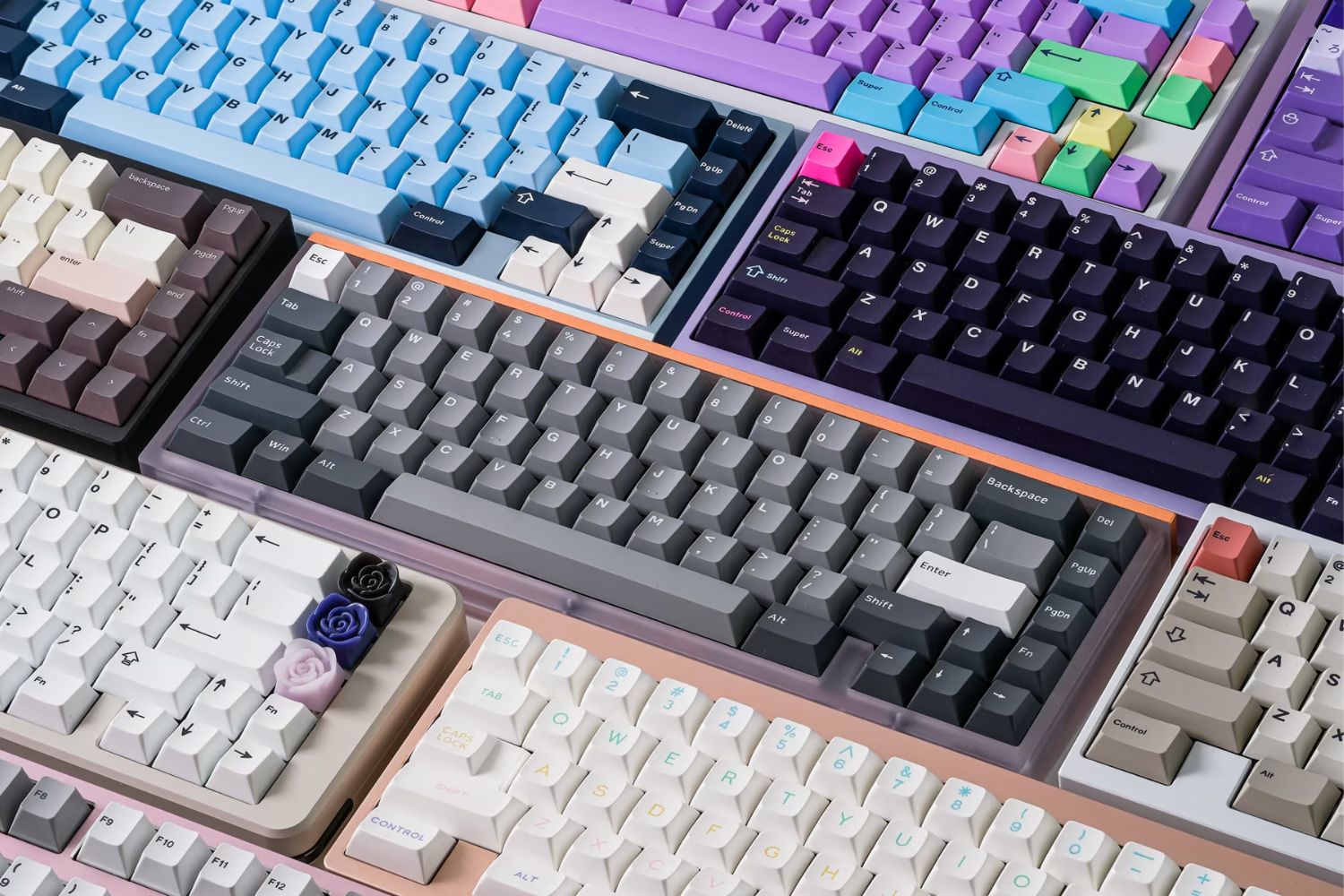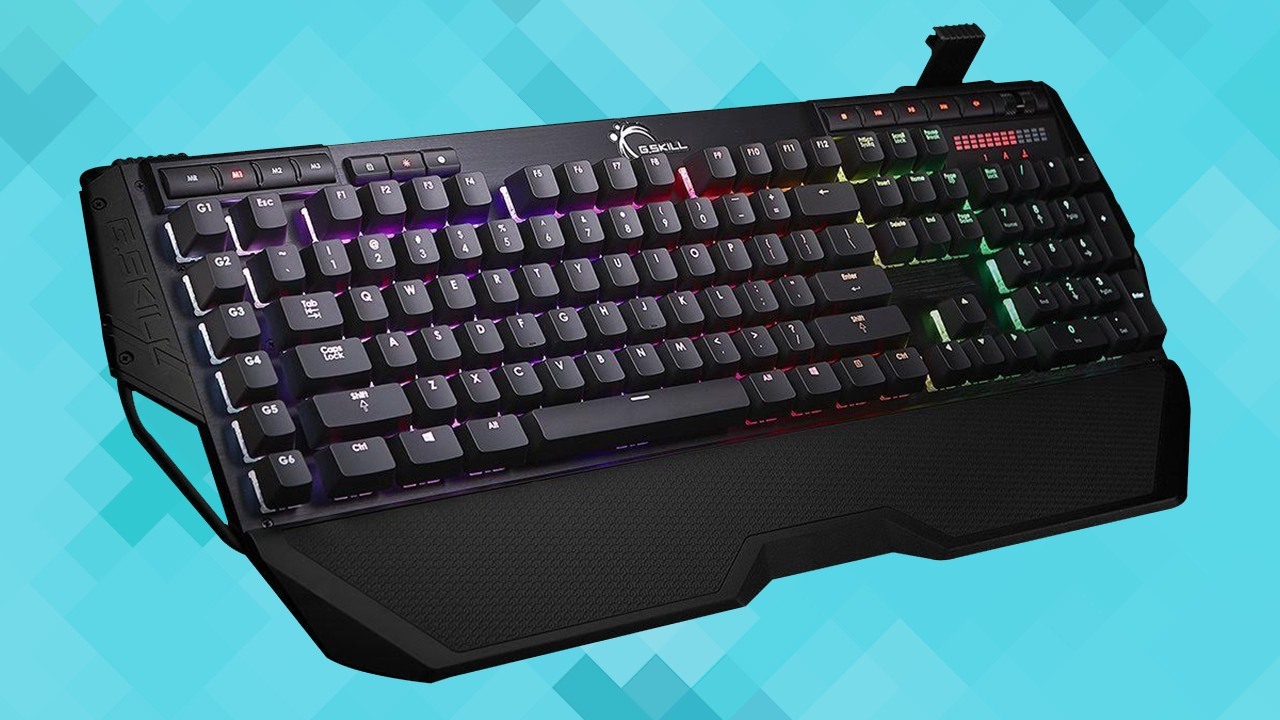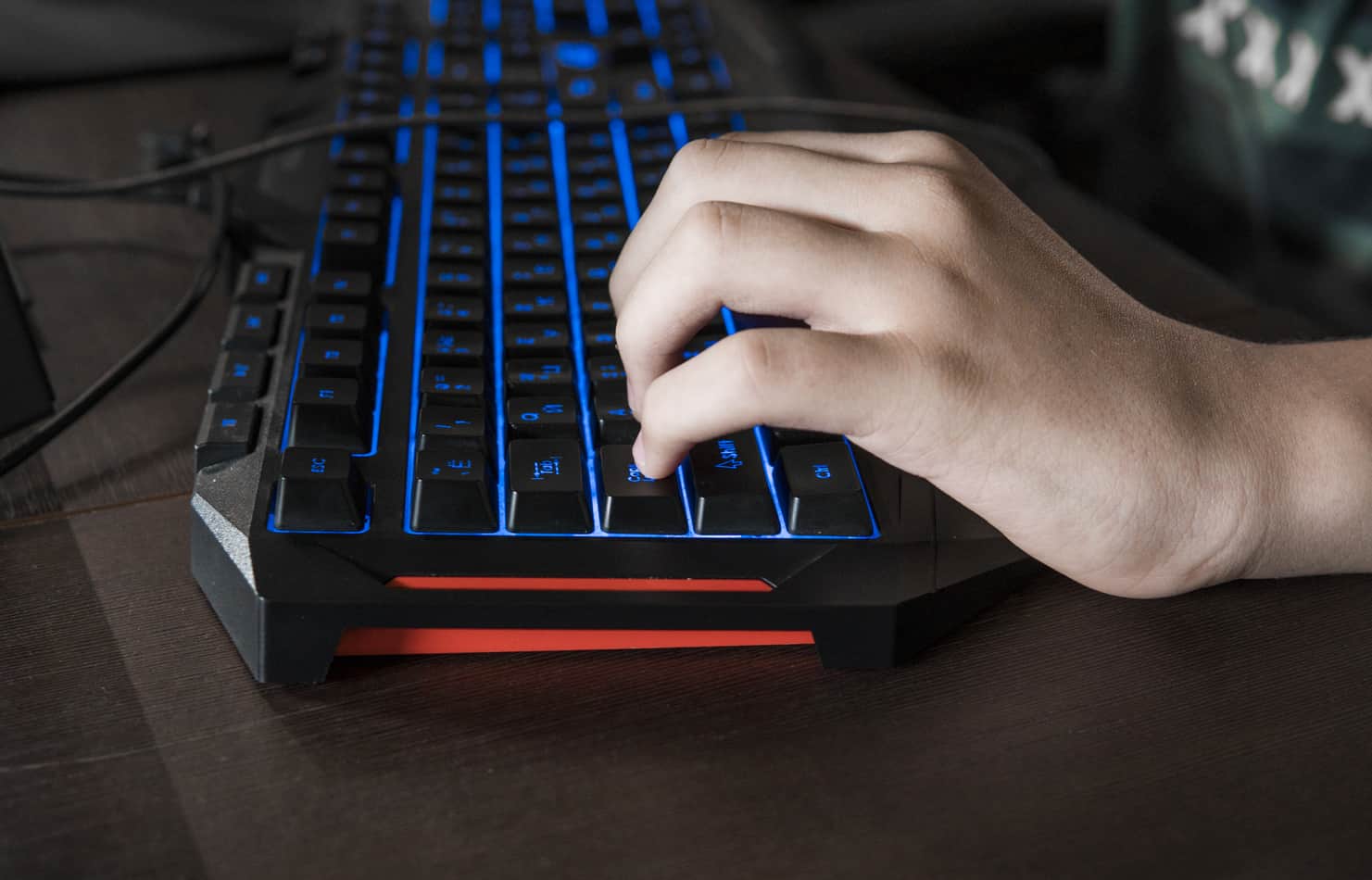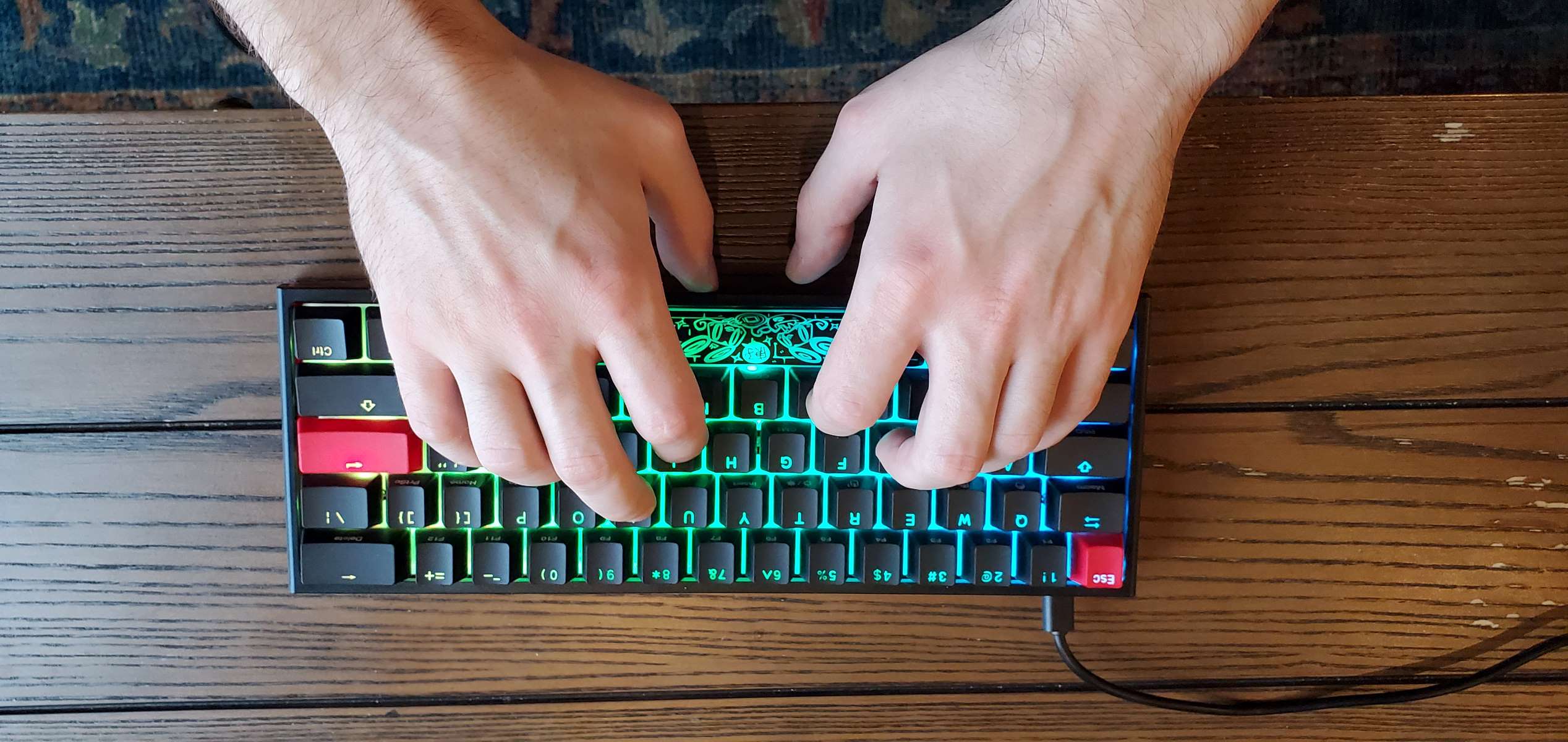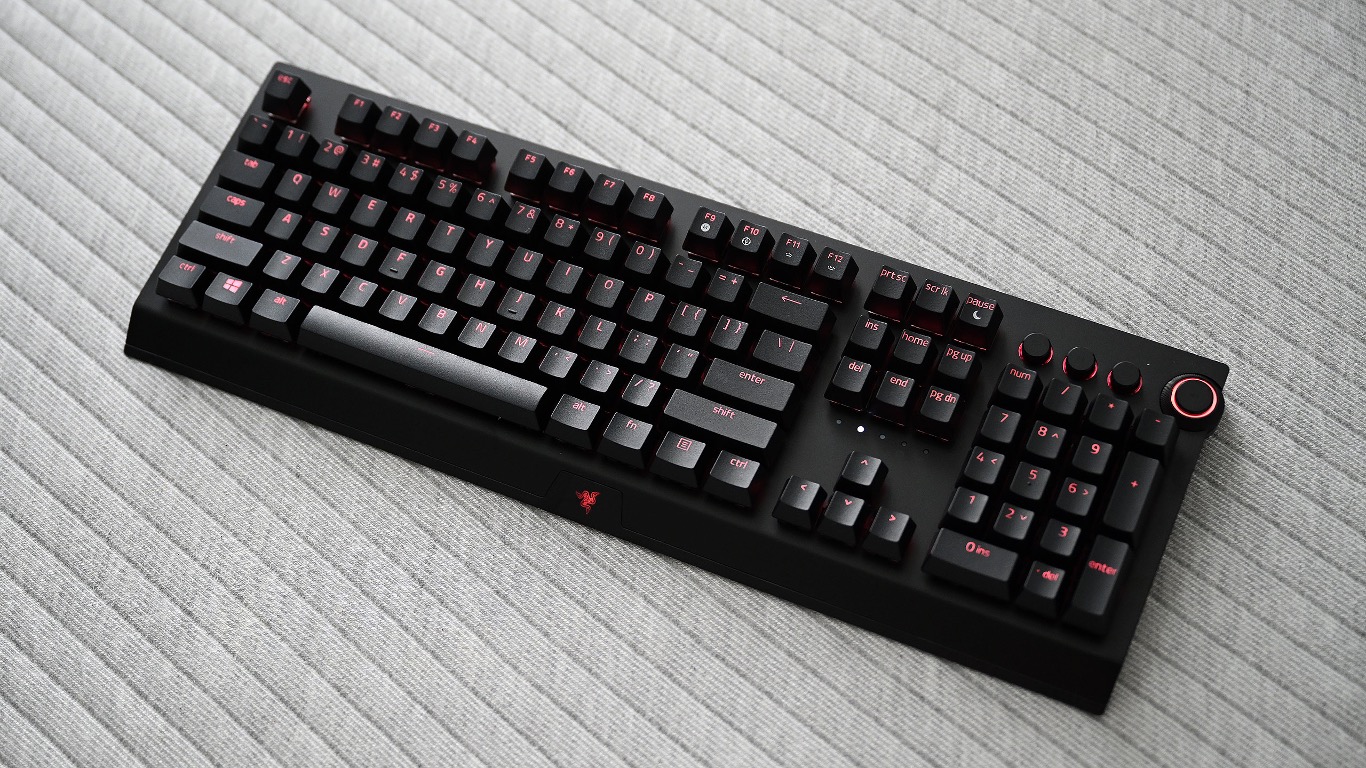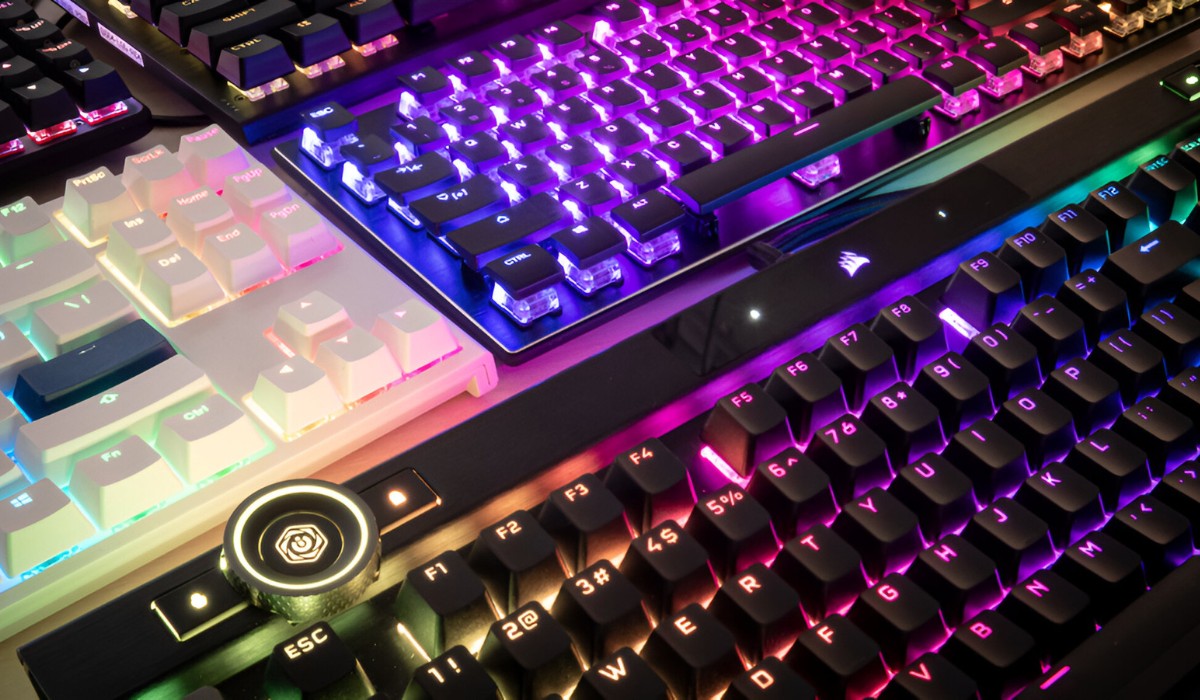Introduction
Building a custom keyboard is an exciting project that allows you to personalize your typing experience and create a device that perfectly suits your needs and preferences. Whether you’re a gaming enthusiast looking for enhanced performance or a writer seeking optimal comfort and functionality, a custom keyboard can be a game-changer.
Not only does building a custom keyboard give you the opportunity to choose from a wide variety of mechanical switches, but it also allows you to design your own unique layout and select the materials for the case. Additionally, you have the freedom to customize the keycaps to match your style and personal aesthetic.
This step-by-step guide will walk you through the process of building your very own custom keyboard, from gathering the necessary tools and materials to programming the firmware and assembling the final product. Whether you’re a seasoned DIY enthusiast or new to the world of electronics, this guide will provide you with the knowledge and confidence to embark on this fulfilling project.
Throughout this guide, we will cover each stage in detail, providing valuable insights and recommendations to ensure a successful outcome. From choosing the right mechanical switches to designing the keyboard case, soldering the components, and programming the firmware, we’ll guide you through every key step involved.
By the end of this journey, you’ll have a fully functional custom keyboard that reflects your unique style and delivers an unparalleled typing experience. So let’s dive in and discover the joy of building your own custom keyboard!
Step 1: Gather the necessary tools and materials
Before diving into the exciting process of building your custom keyboard, it’s important to gather all the necessary tools and materials. Having everything you need at hand will ensure a smooth and efficient workflow, allowing you to focus on the creative aspects of the project. Here’s a list of the essential tools and materials you’ll need:
- Keyboard PCB (Printed Circuit Board): This is the brain of your custom keyboard, responsible for transmitting the keypresses to the computer. Make sure to choose a PCB that is compatible with your desired layout and programming capabilities.
- Mechanical Switches: The switches are responsible for registering the keystrokes and delivering a tactile or linear feel. There are various types of switches available, so choose the ones that best suit your typing style and preferences.
- Keyboard Case: The case houses the PCB and provides protection and stability. You can choose a pre-made case or opt for a DIY approach by creating your own using materials such as wood, acrylic, or metal.
- Keycaps: These are the physical keys that you press when typing. Keycaps come in various shapes, sizes, and materials, allowing you to customize the look and feel of your keyboard.
- Soldering Iron and Solder: Soldering is required to connect the components to the PCB. Make sure to have a reliable soldering iron and high-quality solder for a secure and lasting connection.
- Tweezers and Wire Cutters: These tools are essential for handling small components and trimming wires during the assembly process.
- Screwdriver: A screwdriver will be needed to attach the PCB to the case and secure any necessary screws or fasteners.
- Desoldering Pump or Desoldering Wick: In case of any mistakes or changes during the assembly, these tools will help you remove soldered connections safely.
- Microcontroller and Programmer: If you plan to customize the firmware of your keyboard, you’ll need a compatible microcontroller and a programmer.
While this list covers the essentials, keep in mind that there may be additional tools or materials required based on the specific design and features you have in mind. It’s always a good idea to double-check the requirements of your chosen keyboard layout and do thorough research before starting the project.
Now that you’ve gathered all the necessary tools and materials, you’re ready to move on to the next step: choosing the perfect keyboard layout.
Step 2: Choose the keyboard layout
When it comes to choosing the keyboard layout for your custom keyboard, the possibilities are nearly endless. The layout refers to the arrangement and positioning of the keys on the keyboard. It determines the overall typing experience, efficiency, and ergonomic comfort.
Before making a decision, it’s important to consider your specific needs and preferences. Are you a programmer who requires quick access to special characters? Do you prioritize comfort and want a layout that reduces strain on your fingers and wrists? Or maybe you’re a gamer who needs dedicated function keys for in-game commands.
Here are a few popular keyboard layouts to consider:
- Full-size layout: This layout includes a standard set of keys, including a number pad. It’s a good option if you regularly use the number pad or require a complete set of keys for your tasks.
- Tenkeyless (TKL) layout: TKL keyboards omit the number pad, allowing for a more compact and space-saving design. If you prefer a more compact keyboard or have limited desk space, the TKL layout might be ideal.
- 60% layout: 60% keyboards are even more compact, eliminating the function row, arrow keys, and navigation cluster. This layout is popular among minimalists and those who prefer a clutter-free desk.
- Ergonomic layout: Ergonomic keyboards are designed to reduce strain and promote a more natural typing position. They often feature split or curved designs, allowing for a more comfortable and ergonomic typing experience.
It’s worth noting that there are many other keyboard layouts available, including hybrid layouts that combine the best features of different designs. To help you make an informed decision, it’s advisable to try out different layouts at a local store or through virtual simulations.
Once you’ve selected the layout that best suits your needs, you can move on to choosing the mechanical switches for your custom keyboard. Remember, the layout plays a crucial role in determining the overall functionality and user experience of your keyboard, so take your time to find the perfect fit.
In the next step, we’ll delve into the world of mechanical switches and explore the various types available.
Step 3: Select the mechanical switches
When it comes to the typing experience and feel of your custom keyboard, the choice of mechanical switches is crucial. Mechanical switches are responsible for registering keystrokes and providing tactile feedback, which can greatly impact your typing speed and comfort. There is a wide range of mechanical switches available, each with its own characteristics and feel.
Here are some popular types of mechanical switches:
- Clicky switches: Clicky switches produce an audible “click” sound and a tactile bump when pressed. They provide a satisfying typing experience and are popular among typists who enjoy auditory and tactile feedback.
- Tactile switches: Tactile switches have a noticeable tactile bump when pressed, but they don’t produce the loud click sound. These switches are ideal for those who prefer a tactile response without the noise.
- Linear switches: Linear switches have a smooth and consistent feel without any tactile bump or audible click. They offer a more fluid typing experience and are often preferred by gamers or those who prefer a quiet typing experience.
- Hybrid switches: Hybrid switches combine characteristics from clicky, tactile, and linear switches. They provide a unique typing experience that caters to individual preferences.
When choosing mechanical switches, consider factors such as actuation force, actuation point, and travel distance. Actuation force refers to the amount of pressure required to register a keystroke, while actuation point is the distance at which the switch is activated. Travel distance refers to the total distance the switch travels when pressed.
It’s a good idea to try out different types of mechanical switches before making a decision. Some enthusiasts even create switch testers, which allow you to test out different switches and determine which ones suit your preferences best.
Additionally, keep in mind that different switch manufacturers may offer variations of clicky, tactile, and linear switches. Each manufacturer’s switches have slightly different characteristics, so it’s worth exploring different options to find the perfect fit for your custom keyboard.
Once you’ve chosen the mechanical switches, you can move on to designing the keyboard case, which will house the PCB and switches.
In the next step, we’ll explore how to design the keyboard case and choose the right materials.
Step 4: Design the keyboard case
The keyboard case not only protects the internal components of your custom keyboard but also adds aesthetic appeal. Designing your own keyboard case allows you to create a unique and personalized look that reflects your style and preferences. When it comes to designing the case, there are a few key considerations to keep in mind.
1. Material: The choice of material for your keyboard case can greatly influence the overall look and feel. Common options include plastic, aluminum, wood, acrylic, and even 3D-printed materials. Each material has its own strengths and characteristics, so consider factors such as durability, weight, and visual appeal when making your choice.
2. Ergonomics: Ergonomics play an important role in ensuring a comfortable typing experience. Consider the shape and angle of the case to promote a natural hand and wrist position while typing. Some keyboard cases have a curved or split design to reduce strain and enhance typing comfort.
3. Customization: One of the advantages of building a custom keyboard is the ability to personalize it to your liking. Consider incorporating elements such as RGB lighting, engraved designs, or unique color combinations to give your keyboard case a personalized touch.
4. Compatibility: Ensure that your case design is compatible with the chosen PCB and mechanical switches. Take measurements and consider factors such as mounting points and screw locations to ensure a snug fit for all components.
Depending on your skills and resources, there are various ways to design the keyboard case. You can use CAD software to create a precise digital design and then have it CNC-machined or 3D printed. Alternatively, if you have woodworking skills, you can handcraft a wooden case for a more rustic and natural look.
It’s also worth exploring various online communities and forums where keyboard enthusiasts share their case designs. This can provide inspiration and ideas for your own unique case design.
Once you have a clear design in mind, it’s time to move on to the next step: creating the PCB layout.
In the next step, we’ll delve into the process of creating the PCB layout for your custom keyboard.
Step 5: Create the PCB layout
The Printed Circuit Board (PCB) is the heart of your custom keyboard, where all the components are electrically connected. Designing your own PCB allows you to create a layout that perfectly matches your chosen keyboard design and functionality. While creating a PCB layout may seem daunting, there are tools and resources available to simplify the process.
1. PCB Design Software: To create the PCB layout, you’ll need PCB design software. There are several options available, ranging from beginner-friendly to more advanced software. Some popular choices include KiCad, Eagle, and Altium Designer. These software programs offer a range of features to help you design the circuitry and layout of your keyboard PCB.
2. Key Placement: Begin by deciding the position and layout of the keys on your custom keyboard. Consider the chosen keyboard layout, spacing between keys, and any additional features or macro keys you want to incorporate. This step requires careful planning to ensure the PCB can accommodate all the necessary components and wiring.
3. Traces and Connections: Once you’ve finalized the key placement, you’ll need to create the traces, which connect the keys and switches to the microcontroller. Pay attention to the spacing and width of the traces to ensure proper electrical conductivity and avoid signal interference.
4. Components and Footprints: Select the appropriate footprints for the electronic components you’ll be using, such as diodes, resistors, capacitors, and the microcontroller. It’s important to ensure that the footprints match the size and specifications of your chosen components.
5. Clearances and Rules: Check for any design rules and constraints provided by your chosen PCB manufacturer. These rules will dictate things such as minimum trace widths, spacing between components, and clearance requirements. Adhering to these rules ensures that your PCB design is manufacturable and free from potential issues.
6. Testing and Validation: Before finalizing the design, it’s a good practice to run simulations and perform thorough testing to ensure the functionality and reliability of the PCB. Verify that all connections are correct, run design rule checks, and make any necessary adjustments to improve the design.
Once you’re satisfied with the PCB layout design, you can export the design files in the required format (such as Gerber files) to send them to a PCB manufacturer for fabrication. Keep in mind that the manufacturing process may have specific design requirements, so it’s important to double-check their guidelines and specifications.
In the next step, we’ll cover the process of soldering the components onto the PCB, bringing your custom keyboard one step closer to reality.
Step 6: Solder the components
Now that you have your custom PCB in hand, it’s time to start soldering the components onto the board. Soldering is the process of permanently attaching the electronic components to the PCB by melting a metal alloy called solder. This step requires precision and care to ensure proper connections and a reliable keyboard.
Here’s a step-by-step guide to soldering the components onto the PCB:
- Prepare your workspace: Set up a clean and well-lit workspace with good ventilation. Ensure that you have all the necessary tools and equipment, including a soldering iron, solder wire, flux, tweezers, and a sponge or brass wire cleaner for tip cleaning.
- Soldering iron temperature: Adjust your soldering iron to the appropriate temperature for the components you’ll be soldering. Different components may require different temperature settings, so refer to the manufacturer’s specifications or guidelines.
- Apply flux: Apply flux to the pads and component leads. Flux helps improve solder flow and makes it easier to create clean and reliable solder joints.
- Place the components: Carefully place the components onto their respective pads on the PCB. Ensure proper alignment and orientation, double-checking component markings if necessary.
- Solder the connections: Hold the soldering iron tip against both the component lead and the pad simultaneously. Feed a small amount of solder wire onto the junction of the component lead and pad. The solder should melt and form a smooth, shiny joint. Avoid excessive solder or cold solder joints.
- Clean and inspect: After soldering each component, clean the soldering iron tip on a sponge or brass wire cleaner to remove any excess solder or residue. Inspect the solder joints visually to ensure they are smooth, shiny, and without any bridges or cold joints.
- Repeat for all components: Continue soldering each component following the same process until all the components are securely soldered onto the PCB.
Take your time and work carefully, ensuring that each solder joint is strong and reliable. It’s a good practice to double-check your work and use a magnifying glass if needed to inspect the solder joints for any potential issues.
Once all the components are soldered, it’s time to move on to programming the keyboard firmware, which will enable your custom keyboard to communicate with your computer.
In the next step, we’ll guide you through the process of programming the keyboard firmware.
Step 7: Program the keyboard firmware
After successfully soldering the components onto the PCB, it’s time to program the keyboard firmware. The firmware is the software that controls the functionality of your custom keyboard, dictating how the keystrokes are interpreted and transmitted to the computer.
Here’s a step-by-step guide to programming the keyboard firmware:
- Select a firmware: Choose a firmware that is compatible with your PCB and offers the features and customization options you desire. QMK Firmware and TMK (also known as “jaeku’s fork”) are popular choices and provide extensive documentation and community support.
- Install development tools: Install the required development tools and dependencies for your chosen firmware. This may include a text editor, compiler, and command line tools.
- Configure the firmware: Open the firmware configuration file and customize it to match your specific layout, key mapping, and any additional features you want to include. You can define key functions, macros, and even advanced features like RGB lighting effects.
- Compile the firmware: Use the provided build tools to compile the firmware based on your configuration settings. This step generates the binary file that will be flashed onto the keyboard’s microcontroller.
- Flash the firmware: Connect your custom keyboard to your computer using a USB cable and use the provided flashing tool to upload the compiled firmware onto the keyboard’s microcontroller. Follow the instructions provided by the firmware documentation or community resources for specific details on flashing your keyboard.
- Test and debug: Once the firmware is flashed, test the functionality of your custom keyboard. Ensure that all keys are working as intended, perform any necessary debugging, and make any adjustments to the firmware as needed.
Programming the keyboard firmware allows you to fully customize the behavior of your keyboard. You can define your own key mappings, create complex macros, and even implement layer switching for additional functionality. With the right firmware and configuration, you can truly make your custom keyboard unique and tailored to your needs.
Now that your custom keyboard has its firmware programmed and functioning, it’s time to move on to the exciting final step: assembling the keyboard!
In the next step, we’ll guide you through the assembly process of your custom keyboard.
Step 8: Assemble the keyboard
With all the components soldered onto the PCB and the firmware programmed, it’s time to assemble your custom keyboard. This step brings together all the hard work and planning into a fully functional keyboard that is ready to use.
Follow these steps to correctly assemble your keyboard:
- Prepare the case: If your keyboard case has multiple parts, ensure they are clean and free from any debris or residue. Familiarize yourself with the case design and any instructions or guidelines provided by the manufacturer.
- Mount the PCB: Carefully place the PCB into the designated area of the case. Ensure that it fits securely and aligns properly with the mounting holes and standoffs. Use screws or fasteners, as specified by the case design, to fasten the PCB in place.
- Connect USB cable: If your custom keyboard requires a USB cable for connection to the computer, insert the USB cable into the designated port on the PCB. Ensure a secure connection to avoid any connectivity issues.
- Attach stabilizers (if applicable): If your keyboard features larger keys like the spacebar, it may require stabilizers. Attach the stabilizers to the designated positions on the PCB and ensure they are securely in place.
- Install key switches: Carefully insert each key switch into its corresponding position on the PCB. Ensure that they are aligned properly and fully inserted, with the pins or hot-swap sockets making a solid connection.
- Attach keycaps: Finally, place the keycaps onto the key switches. Press each keycap firmly to ensure they are properly seated and aligned. Take care to ensure the legends on the keycaps are facing the correct direction.
- Test the keyboard: Once the keyboard is fully assembled, it’s time to test its functionality. Connect the USB cable to your computer and type on each key to verify that they register properly. Check for any unusual key behavior or non-responsive keys that may require troubleshooting.
Take your time during the assembly process to ensure everything is in place and functioning correctly. If any issues arise, consult the manufacturer’s guidelines, online forums, or seek assistance from the keyboard enthusiast community to troubleshoot and resolve any problems.
With the keyboard fully assembled and tested, you’re ready to enjoy the fruits of your labor – your personalized, fully functional custom keyboard!
In the final step, we’ll explore how you can further customize your custom keyboard by adding unique keycaps.
Step 9: Customize the keycaps
Customizing the keycaps on your custom keyboard is the final touch that adds a personal and unique flair. Keycaps come in a variety of colors, materials, and profiles, allowing you to tailor the appearance and feel of your keyboard to your liking. Here’s how you can customize your keycaps:
- Choose the keycap material: Keycaps can be made from various materials, including ABS plastic, PBT plastic, and even specialty materials like acrylic and metal. Each material has its own texture, durability, and sound profile, so choose the one that suits your preferences.
- Select the keycap profile: Keycaps come in different profiles, such as OEM, Cherry, SA, and DSA. Each profile has a distinct shape and height, which can affect the typing experience and the overall look of the keyboard.
- Pick a color scheme: Keycaps are available in a wide variety of colors and color combinations. Consider your preferred color scheme and how it complements the design of your custom keyboard. You can choose matching colors or create unique combinations for a personalized touch.
- Design and artwork: If you’re feeling creative, you can even design your own keycap artwork or look for custom keycap sets with unique designs. Laser-etched or doubleshot keycaps allow for intricate designs and legends that won’t fade over time.
- Installation: To install the keycaps, simply place them onto the corresponding key switches and press them firmly until they fit snugly. Double-check the alignment and ensure that each keycap is securely attached.
- Additional customization: Beyond the keycaps themselves, you can also further enhance the look of your keyboard by adding custom keycap pullers, artisan keycaps, or novelty keycaps that represent your interests or hobbies.
Customizing the keycaps allows you to make your keyboard truly unique and tailored to your personal style. It adds a finishing touch to your custom keyboard project, elevating its aesthetics and reflecting your individuality.
Remember that keycap customization is an ongoing process. You can always switch keycap sets or add new ones to refresh the look of your keyboard whenever you feel like a change.
With the keycaps customized, your custom keyboard is complete and ready to be used and admired. Enjoy the satisfaction of typing on a keyboard that not only meets your functional needs but also reflects your personal style.
Congratulations on successfully building your own custom keyboard!
Conclusion
Building a custom keyboard is a rewarding and fulfilling endeavor that allows you to create a device tailored to your needs and preferences. Throughout the steps outlined in this guide, you have learned how to gather the necessary tools and materials, choose the keyboard layout, select the mechanical switches, design the keyboard case, create the PCB layout, solder the components, program the keyboard firmware, assemble the keyboard, and customize the keycaps.
With each step, you gained valuable knowledge and skills, taking you closer to the final product – a fully functional custom keyboard that reflects your individuality and enhances your typing experience. Whether you’re a gamer, writer, programmer, or simply someone looking for a unique and personalized typing tool, your custom keyboard is a testament to your creativity and craftsmanship.
Remember to always prioritize comfort and ergonomics throughout the design and assembly process, ensuring that your custom keyboard provides a comfortable and enjoyable typing experience. Additionally, don’t be afraid to continuously experiment and try new things, whether it’s exploring different mechanical switches, keycap sets, or even delving into more advanced customization options.
Embrace the vibrant and supportive community of keyboard enthusiasts, where you can find inspiration, guidance, and share your own experiences. Engaging with like-minded individuals can open up even more possibilities for customization and improvement.
Building a custom keyboard is not only about the end result, but also about the journey itself. The process allows you to gain new skills, express your creativity, and immerse yourself in a world of endless possibilities. So, embrace the challenge, enjoy the process, and revel in the satisfaction of typing on a keyboard that is truly your own.







